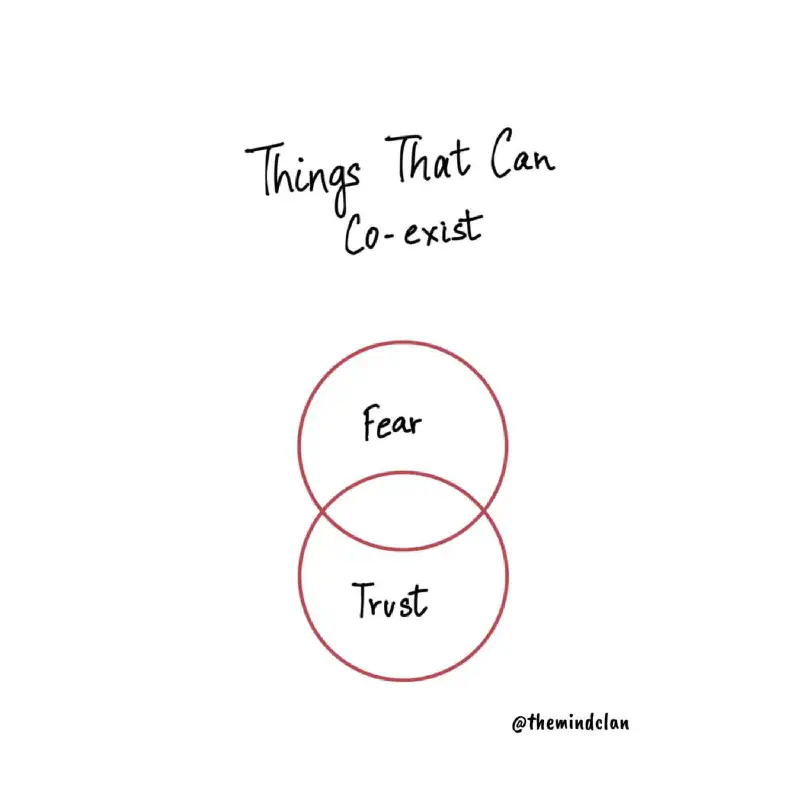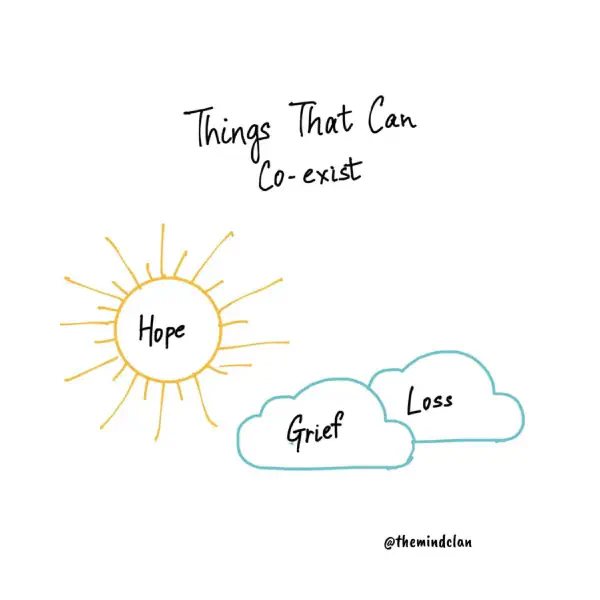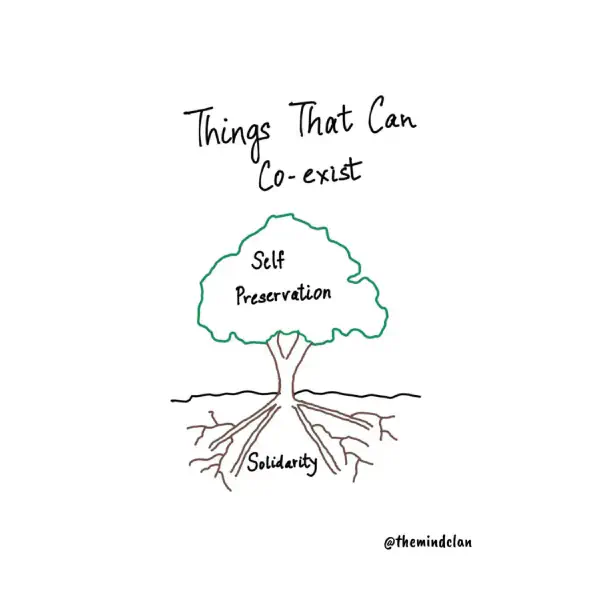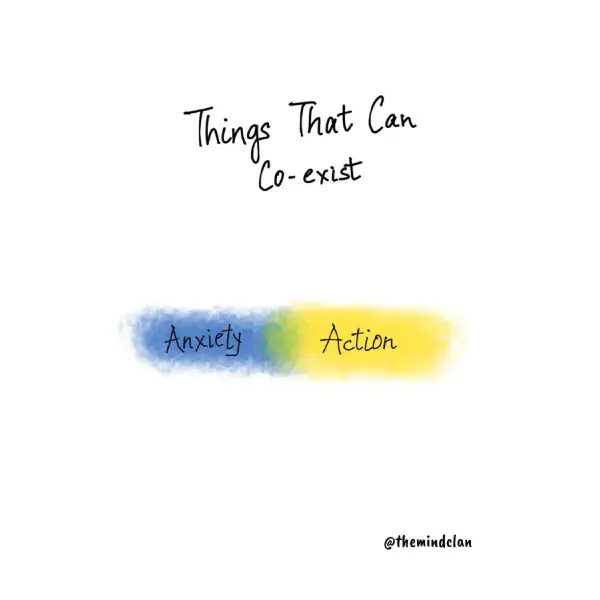Life rarely presents us with pure states or simple emotions. Instead, we find ourselves navigating a world where seemingly contradictory forces exist simultaneously, each claiming their space in our internal landscape. We’re taught to believe that certain emotions cancel each other out-that we can’t be anxious and productive, hopeful and grieving, or afraid while seeking truth. But this binary thinking limits our understanding of the rich complexity of human experience.
The reality is far more nuanced. Our emotional lives are layered, multifaceted, and beautifully contradictory. We can hold multiple feelings at once without one invalidating the other. Learning to recognize and accept these coexisting emotions isn’t just healthy-it’s essential for authentic living. When we stop fighting against the multiplicity of our inner world and start embracing it, we discover a deeper capacity for resilience, empathy, and genuine self-acceptance.
Anxiety and Action
The first illustration captures a fundamental truth about human experience: anxiety and action don’t have to be mutually exclusive. They blend into each other like watercolors on paper, creating a spectrum where worry transforms into motivation. This coexistence suggests that feeling anxious doesn’t preclude taking steps forward-both can occupy the same moment, the same breath, the same decision.
Self Preservation and Solidarity
The tree metaphor reveals another layer of this concept. Self-preservation grows above ground, visible and reaching toward light, while solidarity spreads through hidden root systems below. The tree doesn’t choose between protecting itself and connecting with others-it does both simultaneously. Its survival depends on this dual nature, drawing strength from community while maintaining its individual form.
Hope and Loss
Perhaps nowhere is coexistence more visible than in the relationship between hope and loss. The sun doesn’t wait for clouds to pass before shining; it radiates even when partially obscured. Loss creates the very conditions that make hope meaningful, while hope provides the backdrop against which loss gains its weight. They share the same sky, neither diminishing the other’s presence.
Fear and Truth
The final image presents the most direct visualization of coexistence: two circles that overlap without merging. Fear and truth intersect in a space that belongs to both yet is fully neither. This intersection isn’t a compromise or a weakness-it’s where authentic human experience lives. We can be afraid and still seek truth, hold fear and still face reality.
Beyond Binary Thinking
These visual metaphors challenge the tendency to categorize experiences as either/or rather than both/and. They suggest that emotional and psychological states are more fluid than we often acknowledge, capable of sharing space without canceling each other out. The images present coexistence not as a problem to be solved but as a natural state to be recognized and embraced.
In a world that often demands we choose sides, these illustrations offer a different perspective: that wholeness might come not from resolution but from the graceful acknowledgment that contradictions can coexist-anxiety with action, self-preservation with solidarity, hope with loss, and fear with truth-each adding depth to the human experience.






